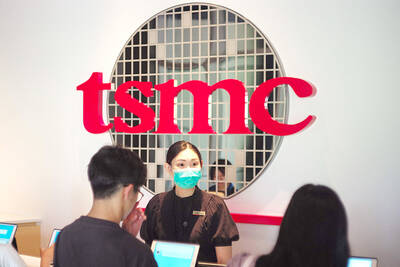The global economy is to have a subdued recovery this year from the COVID-19 pandemic, but the near-term outlook is highly uncertain and growth could be imperiled if COVID-19 infections and delays in the rollout of vaccines continue, the World Bank said on Tuesday.
In its new Global Economic Outlook, the World Bank forecast 4 percent growth this year following a 4.3 percent decline last year, the biggest plunge in global output since a contraction of 9.8 percent in 1945, as nations demobilized at the end of World War II.
By comparison, the global recession triggered by the Great Depression of the 1930s saw growth shrink by 4.8 percent on average from 1930 through 1932. The 2008-2009 financial crisis triggered a 1.8 percent drop in global output in 2009.

Photo: EPA-EFE
“If history is any guide, the global economy is heading for a decade of growth disappointments, unless policymakers put in place comprehensive reforms,” the bank said, citing the global pandemic layered over economic trends already in play.
“While the global economy appears to have entered a subdued recovery, policymakers face formidable challenges in public health, debt management, budget policies, central banking and structural reforms,” World Bank president David Malpass said.
The bank said that global growth this year would be aided by a recovery of 3.5 percent in GDP growth in the US and an even bigger 7.9 percent rebound in China, the world’s two biggest economies.
For last year, the World Bank expects GDP in the US to fall by 4.3 percent, while it predicted a modest 2 percent increase in China.
Because of the uncertainty caused by the rise in COVID-19 cases and initial problems in distributing vaccines, the World Bank said that its forecast is highly uncertain.
Under a scenario where virus cases continue to rise and the rollout of vaccines does not accelerate, global growth could be reduced to a meager 1.6 percent this year.
The new report increased global growth for last year by 0.9 percentage points from its June forecast, reflecting in part better-than-expected performance in China and the US, but the forecast trimmed the outlook for this year by 0.2 percentage points.
For the US, the decline for last year was revised upward by 2.5 percentage points to a smaller decline of 3.6 percent, and the 3.5 percent rebound for this year was lowered by half a percentage point.
To combat the sharp downturn, the World Bank has made US$160 billion available to help more than 100 countries protect the poor, support firms and bolster the recovery.
Malpass told reporters that the World Bank is making US$12 billion available to provide 1 billion COVID-19 vaccinations in poor countries.
“People at the bottom of the income scale were hardest hit by the shutdowns and recession, and will most likely be the slowest to regain jobs and get vaccinations,” Malpass said.
The World Bank expects the eurozone to have a 7.4 percent drop in growth for last year followed by a 3.6 percent this year, while growth in Japan is expected to fall 5.3 percent last year and then rebound by 2.5 percent this year.
For all advanced economies, the World Bank predicted a drop of 5.4 percent last year and a rise of 3.3 percent this year.
For emerging markets and developing countries, the bank said that when all figures are reported, growth is expected to have declined 2.6 percent last year and increased 5 percent this year.

Taiwan Transport and Storage Corp (TTS, 台灣通運倉儲) yesterday unveiled its first electric tractor unit — manufactured by Volvo Trucks — in a ceremony in Taipei, and said the unit would soon be used to transport cement produced by Taiwan Cement Corp (TCC, 台灣水泥). Both TTS and TCC belong to TCC International Holdings Ltd (台泥國際集團). With the electric tractor unit, the Taipei-based cement firm would become the first in Taiwan to use electric vehicles to transport construction materials. TTS chairman Koo Kung-yi (辜公怡), Volvo Trucks vice president of sales and marketing Johan Selven, TCC president Roman Cheng (程耀輝) and Taikoo Motors Group

MAJOR DROP: CEO Tim Cook, who is visiting Hanoi, pledged the firm was committed to Vietnam after its smartphone shipments declined 9.6% annually in the first quarter Apple Inc yesterday said it would increase spending on suppliers in Vietnam, a key production hub, as CEO Tim Cook arrived in the country for a two-day visit. The iPhone maker announced the news in a statement on its Web site, but gave no details of how much it would spend or where the money would go. Cook is expected to meet programmers, content creators and students during his visit, online newspaper VnExpress reported. The visit comes as US President Joe Biden’s administration seeks to ramp up Vietnam’s role in the global tech supply chain to reduce the US’ dependence on China. Images on

New apartments in Taiwan’s major cities are getting smaller, while old apartments are increasingly occupied by older people, many of whom live alone, government data showed. The phenomenon has to do with sharpening unaffordable property prices and an aging population, property brokers said. Apartments with one bedroom that are two years old or older have gained a noticeable presence in the nation’s six special municipalities as well as Hsinchu county and city in the past five years, Evertrust Rehouse Co (永慶房產集團) found, citing data from the government’s real-price transaction platform. In Taipei, apartments with one bedroom accounted for 19 percent of deals last

RECORD-BREAKING: TSMC’s net profit last quarter beat market expectations by expanding 8.9% and it was the best first-quarter profit in the chipmaker’s history Taiwan Semiconductor Manufacturing Co (TSMC, 台積電), which counts Nvidia Corp as a key customer, yesterday said that artificial intelligence (AI) server chip revenue is set to more than double this year from last year amid rising demand. The chipmaker expects the growth momentum to continue in the next five years with an annual compound growth rate of 50 percent, TSMC chief executive officer C.C. Wei (魏哲家) told investors yesterday. By 2028, AI chips’ contribution to revenue would climb to about 20 percent from a percentage in the low teens, Wei said. “Almost all the AI innovators are working with TSMC to address the